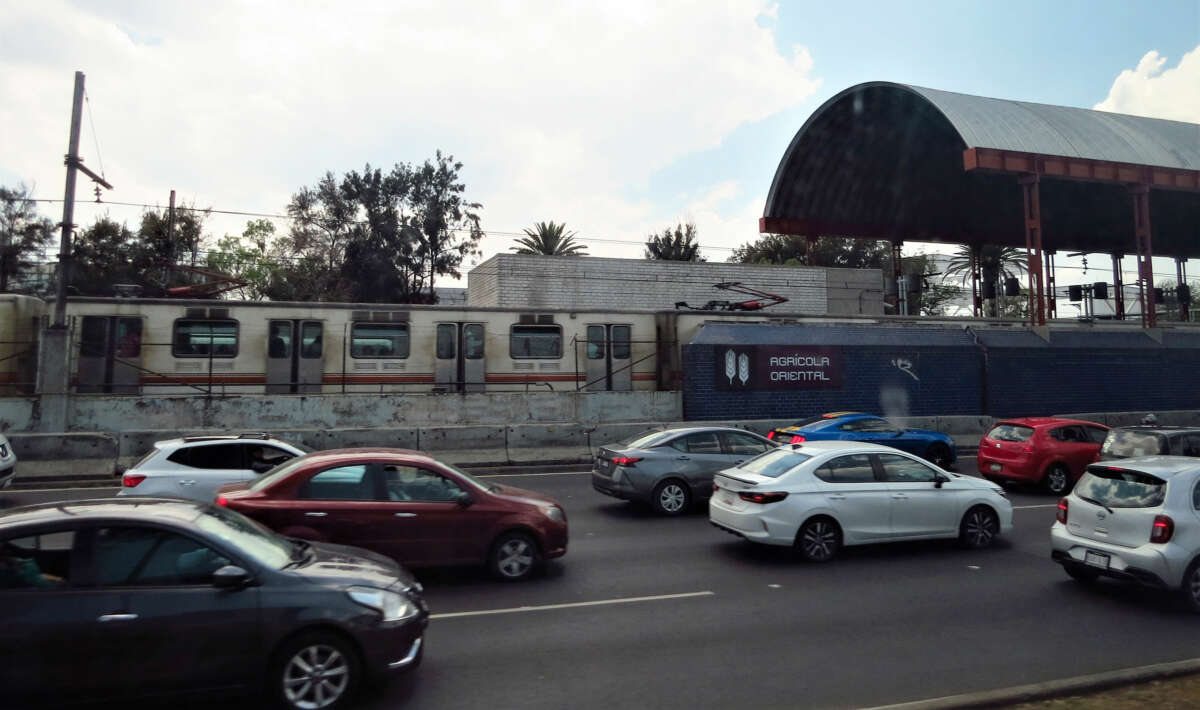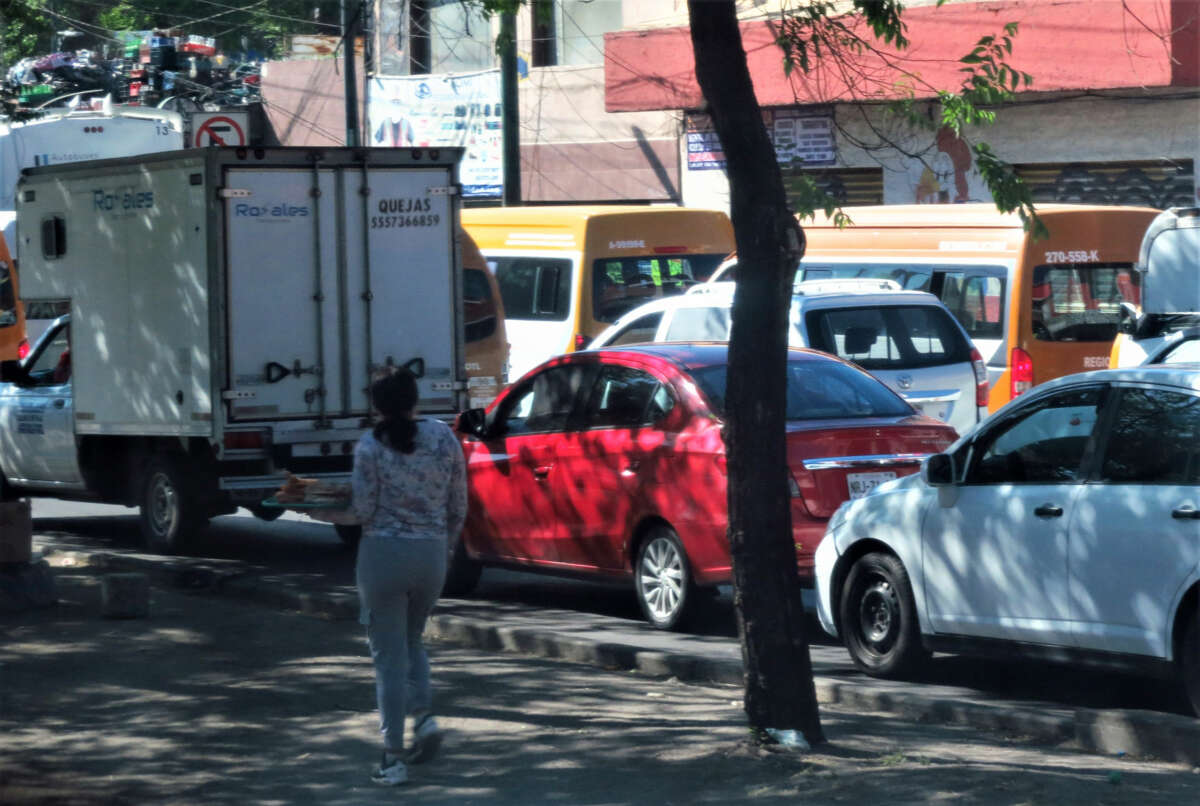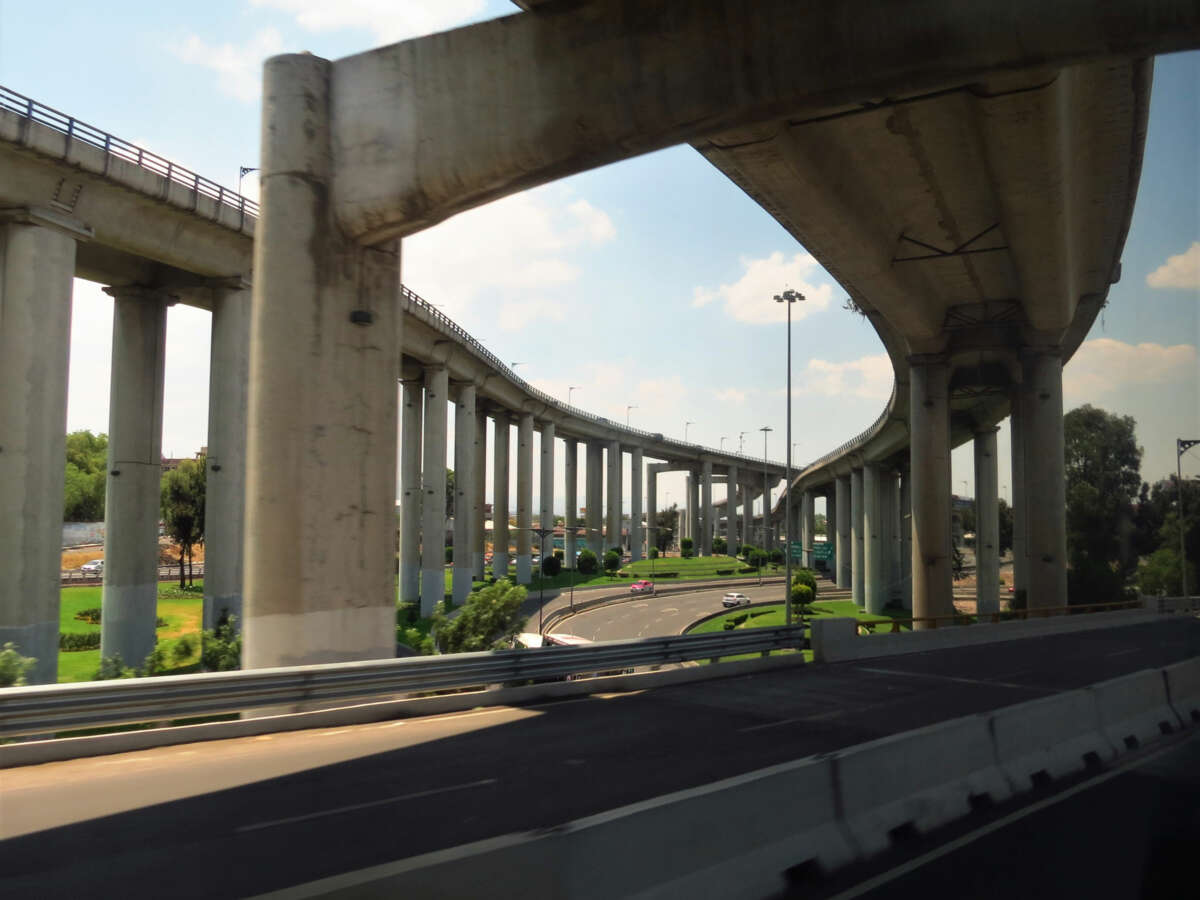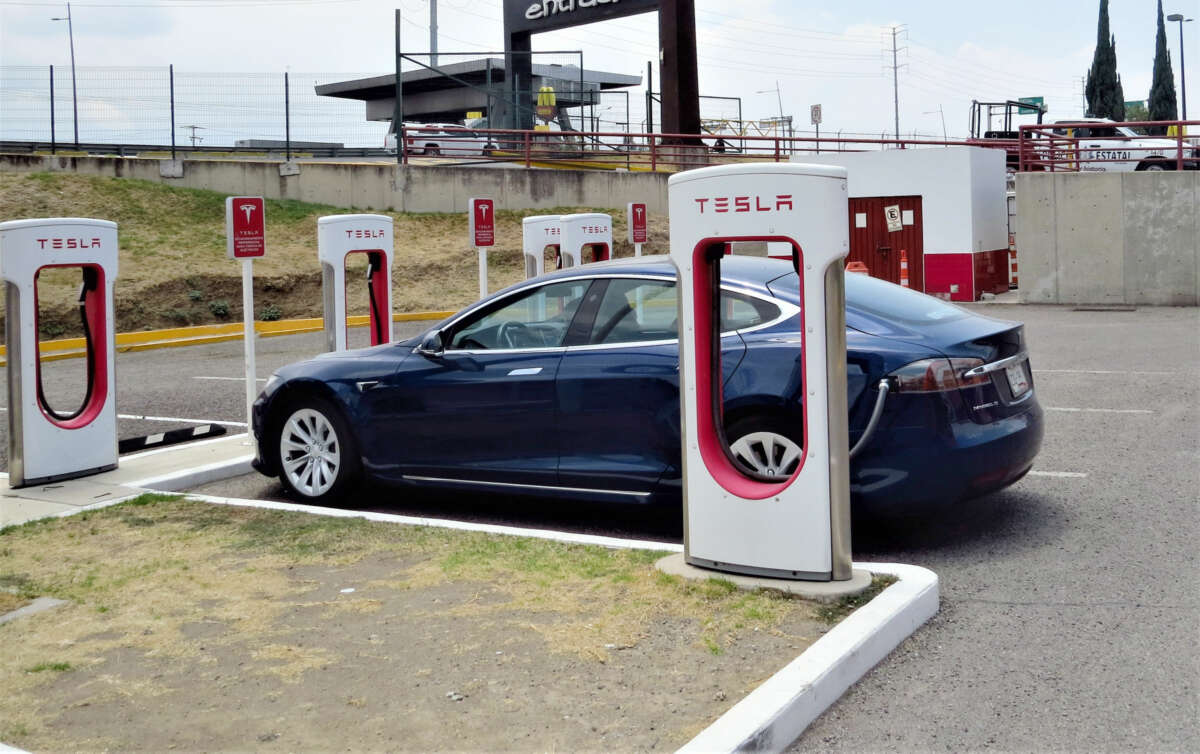People were lining up with buckets to get water from a truck last year in Monterrey, Mexico, as two of the city’s three dams almost completely dried up. Now Tesla has plans to build a huge electric car “gigafactory” in that same water-insecure city.
A gigafactory is Tesla’s term for its massive assembly and parts plants. The Monterrey one will be built on 4,200 acres — twice the size of the company’s Texas plant, and around the size of three small towns. While the electric vehicles (EVs) that Tesla builds are meant to ease car pollution, the company is passing the water consumption and the high pollution resulting from its manufacturing process on to Mexico. The cars will be sent to the U.S., as most Mexicans could never afford them.
The Tesla Gigafactory was announced in March, and CEO Elon Musk said it would be “the biggest electric vehicle plant in the world.” The goal is to build the factory this year and have it running next year. Tesla chose Monterrey, in Nuevo Leon state, because of its low-paid workforce, its proximity to its Austin, Texas, headquarters, and the presence of key suppliers nearby.
Last year, for three months, water was rationed for Monterrey residents — it was only available between 4 am and 10 am. People panicked and bought bottled water, to the point where only the smallest bottles were left in shops. Communal owners of ejidos (land owned by communities rather than by individuals or private corporations) protested the lack of water for small farmers and requested economic support because they weren’t able to water crops or feed their animals. Monterrey had “a 40 percent deficit in the necessary amount of water,” Monterrey resident Ismael Aguilar Benítez told Truthout. Specializing in water management, he is a researcher with the Urban and Environmental Studies Department of the Northern Border College (Colef).
“Tesla is aiming to build around a million vehicles, and in one of its reports, it says that it uses 3 cubic meters of water per vehicle, so that’s around double the amount of water than the Texas factory,” he said.
Aguilar explained that though the company says it will use treated or recycled water — as is already the case in all of Nuevo Leon — he is concerned that the company estimate is low. Its water use will still be very high, and on top of that, “Tesla will attract suppliers and dealers that will also use water, and workers will move to the area, likely an additional 30,000 homes around the new factory.”
The region is facing a drought, and Aguilar says it will only pull through this year if there is above average rain. Trying to reassure investors, the state governor commented, “Nuevo Leon has enough water for companies, but not for human consumption.”

Climate Problems Can’t Be Solved If the Global South Is Thrown Under the Bus
Tesla will also need lithium for the car batteries. And while Mexico nationalized control of its lithium in February, President Andrés Manuel López Obrador has said he is open to Musk exploiting the light metal in Sonora state.
Producing one EV lithium battery involves digging up 500,000 pounds of earth. The mining of other minerals to build the EVs also has serious environmental and health impacts, and that cost is almost always borne in the Global South. The EV production process, including the battery, emits 13 tons of CO2 per car, compared to 10.5 tons for combustion engine cars.
Aguilar worries that even if Tesla complies with state pollution regulations, “big companies tend to transfer their negative impacts to small companies — to suppliers — and they end up contaminating (air and rivers). The impact on Monterrey could be very serious.”
Trying to reassure investors, the state governor commented, “Nuevo Leon has enough water for companies, but not for human consumption.”
In Puebla city, in the center of the country for example, foreign car manufacturers like Audi and Volkswagen are among the main companies responsible for the low air quality. They are polluting the air with benzene, which can lead to anemia, hemorrhages, weakened immune systems and even cancer.
Aguilar said the high population density in Monterrey and high dependence on cars in the city means there is a lot of traffic. In fact, Monterrey ranked 11th out of 991 cities for traffic congestion. The new Tesla factory and the infrastructure that comes with it “will mean more cars in the northwest of the city and will make things worse,” Aguilar said.

Car Colonialism
Mexico is the seventh-biggest car producing country, but 90 percent of vehicles are sold abroad, with 76 percent going to the U.S.
The cars that transnationals in Mexico export are “very safe vehicles that meet international standards for safety systems … meaning they are safer for drivers, passengers and for pedestrians. But the vehicles made for Mexican consumption aren’t as safe and don’t meet those standards,” Armando Pliego, a spokesperson for the Safe Mobility Coalition, a Mexican network of 97 specialist and civil society organizations campaigning for safer and better transport, told Truthout.
The so-called free trade agreements that Mexico has had with the U.S. and Canada (first NAFTA and now USMCA) have given U.S. and Canadian companies great advantages, at the expense of Mexico. The companies — including Tesla — receive tariff-free imports, exploited labor, cheap water, electricity and land, send the products and profits to their headquarter countries, and leave Mexico polluted and struggling to access water.
For Karen Castillo, member of the Memory and Freedom Observatory, which documents attacks against activists and social movements in Mexico, the new Tesla Gigafactory is “part of a historic policy towards Mexico of extractivism, in which other countries come here and take advantage of the land, strip it and destroy it for the economic benefit of their countries and companies … and of course this Tesla plant is part of this pattern of ecocide and colonial extractivism.”
She told Truthout, “This process has been speeding up in Mexico; the door has been opened to companies so that they can come here and … use our resources without any concern for what happens to the environment, to nearby communities.”
Castillo is participating in a 10-day caravan of activists that is visiting communities that are resisting other large commercial or industrial projects being built without consultation or concern for their impact. “It is mostly rural and urban communities that are resisting these actions, so they are the ones being demonized and criminalized,” she said.

EVs Aren’t a Solution in an Unequal World
Another irony of the Tesla plant is that not even the wealthiest Mexicans could afford an EV. Tesla’s cheapest model is $55,000 in U.S. currency. On average, Mexican workers make just $366 in U.S. currency a month — while the majority informal workers would make less. The cheapest Tesla is more expensive than many homes, and 10 times more than a secondhand car.
A U.S.-based study found that people who can consider buying an EV typically have homes already, degrees and multiple vehicles. They have an average annual income of $150,000 in U.S. currency or more, while even the top 1 percent of Mexicans only earn an average of $81,093 in U.S. currency.
The new Tesla Gigafactory is “part of a historic policy towards Mexico of extractivism.”
Further, EVs require new infrastructure and certain living conditions, like garages for chargers. McKinsey estimated that EV infrastructure would cost the U.S. $35 billion to meet demand by 2030. Mexico and other Global South countries don’t have those sorts of funds: A lot of roads in Mexico are still dirt and many of its hospitals are severely lacking, so spending money on EV chargers shouldn’t be a priority.
“A lot of Mexico’s urban areas were developed without much planning, so many of the poorer areas are far away and not well connected with services,” Pliego said. He described a model of urban development that “privileges cars” and the people who are able to own them.
“If we just substitute one kind of car for another, all that is happening is road insecurity or traffic congestion is being electrified … and an increase in EV chargers would cause an increased strain on the already struggling electricity grid,” he said.
Spending on EV infrastructure would divert more resources — money, energy and physical space — toward private vehicles, instead of the public transport people need, he argued.
While just 25 percent of Mexico’s population uses cars, cities spend 47 percent of their transit budgets, on average, on car infrastructure and nothing on public transport. The federal government spends 1.2 percent of its mobility budget on public transport. Governments rent out bus routes to private companies that then focus more on profits than on providing a good service, Pliego explained.
“Public transport has been abandoned. We need a transport planning vision that takes different needs and patterns of movement into account,” he said.
Truthout Is Preparing to Meet Trump’s Agenda With Resistance at Every Turn
Dear Truthout Community,
If you feel rage, despondency, confusion and deep fear today, you are not alone. We’re feeling it too. We are heartsick. Facing down Trump’s fascist agenda, we are desperately worried about the most vulnerable people among us, including our loved ones and everyone in the Truthout community, and our minds are racing a million miles a minute to try to map out all that needs to be done.
We must give ourselves space to grieve and feel our fear, feel our rage, and keep in the forefront of our mind the stark truth that millions of real human lives are on the line. And simultaneously, we’ve got to get to work, take stock of our resources, and prepare to throw ourselves full force into the movement.
Journalism is a linchpin of that movement. Even as we are reeling, we’re summoning up all the energy we can to face down what’s coming, because we know that one of the sharpest weapons against fascism is publishing the truth.
There are many terrifying planks to the Trump agenda, and we plan to devote ourselves to reporting thoroughly on each one and, crucially, covering the movements resisting them. We also recognize that Trump is a dire threat to journalism itself, and that we must take this seriously from the outset.
Last week, the four of us sat down to have some hard but necessary conversations about Truthout under a Trump presidency. How would we defend our publication from an avalanche of far right lawsuits that seek to bankrupt us? How would we keep our reporters safe if they need to cover outbreaks of political violence, or if they are targeted by authorities? How will we urgently produce the practical analysis, tools and movement coverage that you need right now — breaking through our normal routines to meet a terrifying moment in ways that best serve you?
It will be a tough, scary four years to produce social justice-driven journalism. We need to deliver news, strategy, liberatory ideas, tools and movement-sparking solutions with a force that we never have had to before. And at the same time, we desperately need to protect our ability to do so.
We know this is such a painful moment and donations may understandably be the last thing on your mind. But we must ask for your support, which is needed in a new and urgent way.
We promise we will kick into an even higher gear to give you truthful news that cuts against the disinformation and vitriol and hate and violence. We promise to publish analyses that will serve the needs of the movements we all rely on to survive the next four years, and even build for the future. We promise to be responsive, to recognize you as members of our community with a vital stake and voice in this work.
Please dig deep if you can, but a donation of any amount will be a truly meaningful and tangible action in this cataclysmic historical moment. We are presently looking for 464 new monthly donors in the next 8 days.
We’re with you. Let’s do all we can to move forward together.
With love, rage, and solidarity,
Maya, Negin, Saima, and Ziggy
